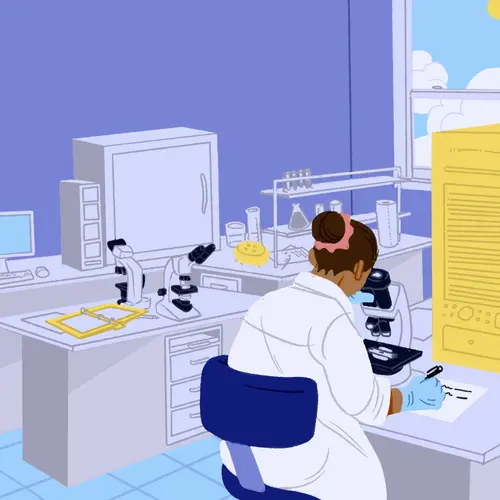Advances in treatment for multiple myeloma have improved survival rates over the last 3 decades. But researchers are still figuring out the best treatments for high-risk multiple myeloma. It can’t be cured, so the goal is symptom-free survival balanced with treatment side effects. Here’s what you need to know.
What Is High-Risk Multiple Myeloma?
Multiple myeloma is typically divided into two categories: standard-risk or high-risk. That’s based on four factors:
- Gene mutations or changes
- The amount of a protein, beta-2-microglobulin, in your blood
- The amount of albumin in your blood
- The amount of lactate dehydrogenase (LDH) in your blood
The specific gene changes are:
- Losing a piece of chromosome 17
- A translocation, or exchange of materials, from chromosome 4 to 14
- An exchange of materials between chromosomes 14 and 16.
About a quarter of all cases are high-risk.
How Is High-Risk Multiple Myeloma Treated?
Your doctor will likely want to start treatment ASAP. It’ll be more aggressive than therapies for standard-risk multiple myeloma.
The hope is to see what experts call a complete response. That means:
- No monoclonal protein in your blood or urine
- No large groups of plasma cells outside your bone marrow
- The number of plasma cells in the bone marrow isn’t high.
Options include:
Clinical trials. Experts often suggest that people with high-risk multiple myeloma take part in clinical trials. That’s because standard treatment generally doesn’t help much. A clinical trial is a safe way to study how well new treatments or new combinations of existing treatments work. You can find information about clinical trials near you at: https://www.cancer.gov/about-cancer/treatment/clinical-trials.
If you don’t want to do a clinical trial or aren’t a good fit for one, you can try the medications used to treat standard-risk multiple myeloma. These are:
Bortezomib (Velcade). This type of drug is a proteasome inhibitor. Proteasomes themselves break down protein in cells. They are very active in multiple myeloma cells, which make a lot of protein. But bortezomib stops proteasomes from doing their job. So proteins build up and myeloma cells die. It’s usually given as a shot under the skin (subcutaneously). Side effects include nerve damage and a higher risk of infection.
Lenalidomide (Revlimid). This is an immunomodulator. It uses your body’s own immune system to fight myeloma cells. It’s taken as a pill. Other options in this class of drugs include pomalidomide (Pomalyst) and thalidomide (Thalomid). Since they may cause severe birth defects, you can’t use them if you’re pregnant.
Dexamethasone. This is a steroid that kills myeloma cells when given in high doses. It’s given as a shot in your muscle or through an IV in your vein. The combination of an immunomodulator and a steroid raises your risk of forming blood clots. Your doctor may recommend that you take aspirin, or prescribe a blood thinner.
Daratumumab (Darzalex), daratumumab and hyaluronidase-fihj (Darzalax Fastpro). Either of these may be added. It’s a monoclonal antibody that kills myeloma cells directly and tags the CD38 protein they make. This helps your immune system recognize and attack them. Daratumumab is given as a shot under the skin or through an IV into your vein. Early research suggests it may work better in those with high-risk multiple myeloma than the three-drug plan alone, but more research is needed to know for sure.
Is a Stem Cell Transplant the Best Option for High-Risk Multiple Myeloma?
It may be another option if you don’t want to do a clinical trial or aren’t a good fit for one. Stem cell transplants are when healthy cells from another part of your body (or from someone else) are put into your bloodstream. They travel to your bone marrow and (hopefully) start to make new blood cells.
Stem cell transplants have considerable risks and complications, so it’s not a good idea for everyone. In Europe, they’re usually only offered to people under the age of 65. The U.S. doesn’t use a strict age limit. Your doctor will decide based on your age and overall health.
If you’re given the green light, you’ll likely be treated with a three-drug plan using bortezomib, lenalidomide, and dexamethasone. This therapy usually takes about 4 months. Once you’re done, the doctor will probably want you to get the stem cell transplant right away to try to keep your disease from getting even worse.
Once you’ve finished stem cell treatment, your doctor will most likely want to keep you on maintenance therapy with bortezomib. They may also add on lenalidomide and dexamethasone again. One study found that people who followed this treatment didn’t see their cancer progress for about 32 months, on average. And at 3 years, more than 90% were still alive.
Your doctor may also recommend a tandem transplant. That’s when you do the transplant process again. One study found that tandem treatment increased 5-year survival rates from 17% to 70%.

